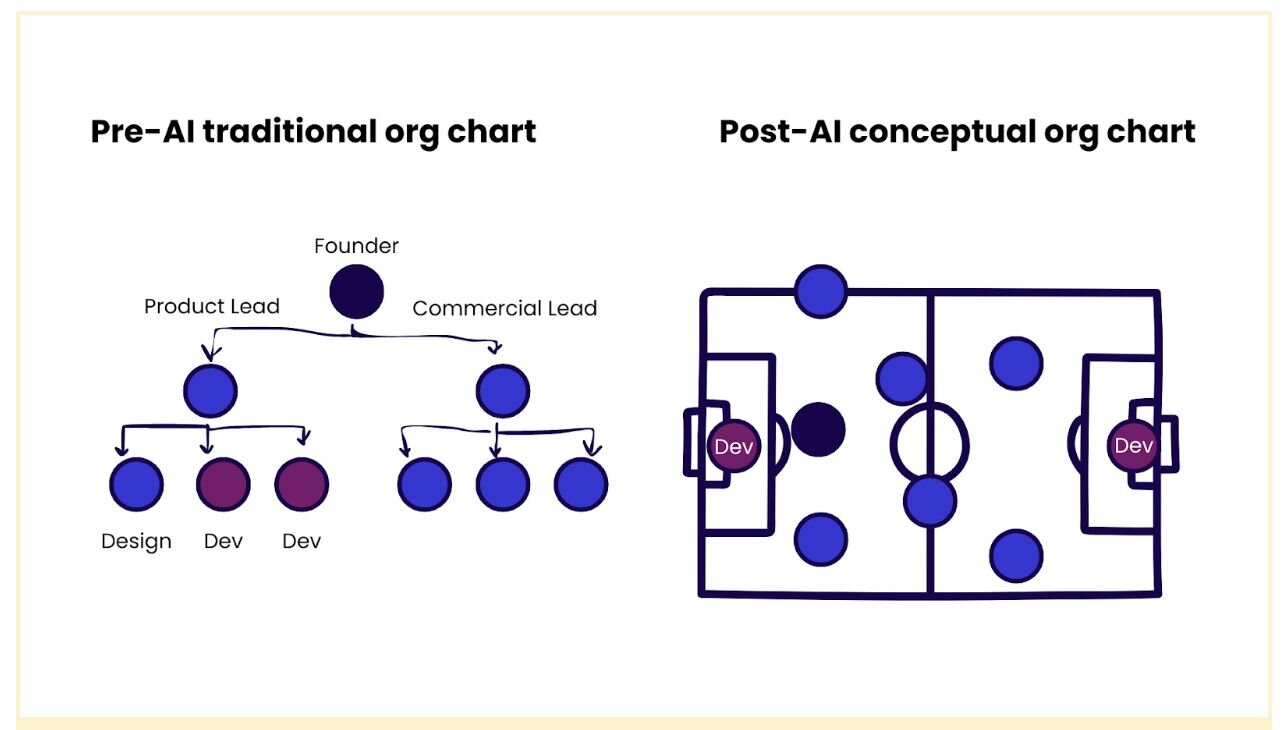Upskilling has always been important for product managers but recent trends like artificial intelligence (AI)/ machine learning (ML) and product-led growth (PLG) have changed the landscape so rapidly that every product manager is feeling the pressure to upskill in the latest technologies and trends.
According to the World Economic Forum, the 2020s are becoming the decade of development for employees in terms of skills and career progression. Employers expect that 44% of workers’ skills will be disrupted in the next five years and that six in 10 staff members will require training before 2027, according to the Forum’s Future of Jobs Report 2023.
Role of employers
According to LinkedIn's 2021 Workplace Learning Report, in a world awake to the impact of AI impact, skill building is no longer simply a perk for employees — it’s a priority for organizational success. It’s no surprise that aligning learning to business goals is the learning and development(L&D) top focus area for the second year in a row. But, as the Harvard Business Review puts it: “Among all that have embraced the reskilling challenge, only a handful have done so effectively, and even their efforts have been subscale and of limited impact.”
Employees need to self-motivate and upskill or reskill themselves rather than waiting for their organization to implement a comprehensive L&D program. According to a study by Burning Glass Technologies, workers who acquire new skills through upskilling programs can increase their earning potential by up to 30%.
How can you help yourself to upskill?
The variety of options for taking courses and obtaining certifications has increased significantly. My LinkedIn feed, messages, and emails are overflowing with offers from educational institutions providing various certifications and courses. And employers are increasingly seeking additional qualifications such as certifications and completed courses to enhance resumes.
We all have limited time and money to dedicate to upskilling. So how do you go about selecting from the available options and maximizing the benefits of your upskilling efforts?
Tips to save time
Here’s my experience of developing my upskilling strategy.
The main factors to consider when deciding which courses or certifications to pursue include time, money, and learning fit. Our goal is to minimize the time and money invested in upskilling while maximizing the learning outcomes. You can also use a template like this or a variation of it if you want a way to track your progress.
Most of us have a job where we spend 10-12 hours a day and have family obligations to take care of after work. This leaves us with only one or two hours a day to dedicate to upskilling and related activities. We need to spend our time wisely.
Put your product manager prioritization skills to work. Create a list of skills you want to improve and prioritize them based on the time you can allocate to this activity.
Use your time management skills to achieve your learning objectives. This can include listening to audiobooks or podcasts during your commute, or reading a product management book while assisting your kids with their homework. You can even turn it into a competition with your child to see who can finish the chapter first.
I found the webinars from ProductSide to be perfect for my consumption. They are just the right length, about 50 minutes long. The plus side of these webinars is that they not only focus on core product management concepts but also showcase how companies have benefited from implementing those concepts. So it's like getting two-in-one learning for me. One example is "How Product Managers Can Do More with Less," presented by the ProductSide team and the CPO of craft.io.
Tips to save money
Take advantage of free resources: Exhaust all the free webinars and content available on various product management skills. Many online platforms offer free resources such as webinars, articles, and tutorials that can provide valuable insights and knowledge without any cost.
Spend wisely on courses: Before signing up for a course, thoroughly understand the course structure and ensure it aligns with your learning objectives. For example, if you're interested in taking a course on AI, conduct research to determine which aspects of AI you want to focus on. This will help you narrow down your options and select a course that best meets your needs.
Use employer resources: If your employer has a budget for upskilling employees, take advantage of those offerings. Explore internal training programs, workshops, or subsidies for external courses that align with your professional development goals. Work with your management to suggest courses that would benefit all product managers in the company, maximizing the value of the available resources.
Mind The Product is another website I use for product management resources. In the midst of the chaos of AI courses flooding the internet, I came across Mind The Product’s course on AI for Product Management and it’s everything I was looking for. It gave the right pointers on how product managers should think about their products in the era of AI and provided frameworks on how to structure that thinking. Now it is my go-to guide at work when I’m thinking about my own product. Mind The Product is also my go-to site for learning and upskilling.
Tips to maximize the learning fit
Cognitive and self-efficacy skills topped the World Economic Forum’s list of the top 10 skills of 2023, with analytical and creative thinking leading the way. This is followed by resilience, flexibility and agility, motivation and self-awareness, curiosity and lifelong learning.
Many soft skill and hard skill trends in product management come and go, but some endure longer. Choose a course or certification program whose teachings transcend passing trends. Stanford LEAD was such a program for me. I found its variety of courses—ranging from Basics of Financing Innovation and How to Lead Effective Teams to Strategic Leadership, Design Thinking, and Creating a Life of Consequence—to equip you with a well-rounded education and tools necessary to succeed as a business leader, regardless of market changes.
The benefits of the Stanford LEAD network of highly talented and motivated professionals extend a lifetime. While the price of this program may be steep and the time commitment significant, the benefits for me have far outweighed the investment. I highly recommend pursuing a certification from a university that offers a diverse range of courses in life and leadership skills. This forms the foundation for ongoing upskilling endeavors.
There are other avenues for upskilling. Engaging in courses or certifications enables you to build a network of peers. Many of them constantly seek like-minded individuals to provide early feedback for their prototypes, often involving the latest technologies and trends. Such exchanges of ideas and discussions serve as a practical way to learn and grow professionally.
Be data-driven
Use reports such as LinkedIn's 2021 Workplace Learning Report or those from the World Economic Forum to plan your learning based on where the skill trends are heading. By doing so, you'll stay ahead of the curve instead of chasing it.
Learning is easier than ever
Due to the many online options now available, it has become easier than ever to enroll in tailored courses that suit your specific needs. Gone are the days when you had to commute to attend physical classes. Now, you can customize your training according to your exact requirements, rather than being confined to a fixed curriculum.
Why learn?
Learning goes beyond its obvious advantages to your professional career. Some other key advantages to your general well-being are listed below:
- Improve your self-confidence.
- Keep your brain healthy and sharp.
- Increase learning speed.
- Acquire practical life skills!
“Education is not the learning of facts, but the training of the mind to think!”
-Albert Einstein
Hope you found these tips useful. Happy learning! Remember to be patient through this learning journey. There is no magic wand that can give you immediate results, but if you stay the course for six months to a year and incorporate learning into your everyday routine, results will come.
Explore more great product management content by exploring our Content A-Z







